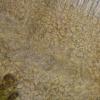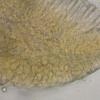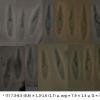
07-01-2026 10:24
 Danny Newman
Danny Newman
Pezicula sp. on indet. hardwood Appalachian Highl

07-01-2026 10:05
 Danny Newman
Danny Newman
cf. Chaetospermum on XylariaCosby Campground, Grea

02-01-2026 17:43
MARICEL PATINOHi there, although I couldn't see the fruitbody, I

04-01-2026 17:45
 Stephen Martin Mifsud
Stephen Martin Mifsud
I was happy to find these orange asmocyetes which

03-01-2026 13:08
Niek SchrierHi all,We found groups of perithecia on a Lecanora

29-12-2025 17:44
Isabelle CharissouBonjour,J'aimerais savoir si d'autres personnes au
Orbilia orange
Viktorie Halasu,
07-08-2019 12:40
 Hello forum,
Hello forum,this orange Orbilia was growing on decorticated wood, lowland alluvial forest, periodically flooded place, coll. 30.5.2019. Capitate paraphyses with some incrustation. Anamorph not observed. I'm sorry I don't have any macro photo. Would anyone recognize it from such sparse data?
Thank you in advance.
Viktorie
Hans-Otto Baral,
07-08-2019 12:46

Re : Orbilia orange
Dear Victorie
the colour of the apos is important. You say orange which more or less would exclude Orbilia rosea which we consider typically with rose apothecia although the name derives from the rose culture colour.
O. luteorubella is then the choice, although the spores are a bit short (did you evaluate spore size?).
Alluvial means that there is a running water? O. luteorubella prefers standing water (ponds etc.), but this is not obligatory.
The two species are hardly separable except using the ITS or LSU marker.
I see you had luteorubella in Ölmütz with also short spores and more pinkish apos.
Zotto
the colour of the apos is important. You say orange which more or less would exclude Orbilia rosea which we consider typically with rose apothecia although the name derives from the rose culture colour.
O. luteorubella is then the choice, although the spores are a bit short (did you evaluate spore size?).
Alluvial means that there is a running water? O. luteorubella prefers standing water (ponds etc.), but this is not obligatory.
The two species are hardly separable except using the ITS or LSU marker.
I see you had luteorubella in Ölmütz with also short spores and more pinkish apos.
Zotto
Viktorie Halasu,
11-08-2019 16:47

Re : Orbilia orange
Dear Zotto,
thank you very much and sorry for late answer.
What do you mean by "evaluating spore size"? It was measured on 42 spores, although I admit that it's be a bit approximate because of the unsharp photos. I could at least photograph rehydrated exsiccate, but unfortunately it's already in the freezer and will stay there for next few months (to get rid of some larvae etc in the wood).
The locality is Cernovirske slatiniste in Olomouc-Cernovir. You've already seen/determined O. aurantiorubra, Hymenoscyphus aff caudatus (H+) and H. aff imberbis (H-) from there. No running water (except for slightly acidic Fe3+ spring), but several more boggy places, filled with water after rains - this was in one of them. Maybe "riparian" is better word than "aluvial", I'm not very versed in english terminology yet. I found also some Hymenoscyphus(?) on caddisfly (Limnephilidae) cases in the same place, but it didn't survive in fridge. :-/
Best regards,
Viktorie
thank you very much and sorry for late answer.
What do you mean by "evaluating spore size"? It was measured on 42 spores, although I admit that it's be a bit approximate because of the unsharp photos. I could at least photograph rehydrated exsiccate, but unfortunately it's already in the freezer and will stay there for next few months (to get rid of some larvae etc in the wood).
The locality is Cernovirske slatiniste in Olomouc-Cernovir. You've already seen/determined O. aurantiorubra, Hymenoscyphus aff caudatus (H+) and H. aff imberbis (H-) from there. No running water (except for slightly acidic Fe3+ spring), but several more boggy places, filled with water after rains - this was in one of them. Maybe "riparian" is better word than "aluvial", I'm not very versed in english terminology yet. I found also some Hymenoscyphus(?) on caddisfly (Limnephilidae) cases in the same place, but it didn't survive in fridge. :-/
Best regards,
Viktorie
Hans-Otto Baral,
11-08-2019 20:54

Re : Orbilia orange
Sorry, I overlooked your spore data below the photo collage.
For the wood you did not indicate if it is angiospermic and what it could be?
A log?
The pinkish apothecia are on another piece of wood?
For the wood you did not indicate if it is angiospermic and what it could be?
A log?
The pinkish apothecia are on another piece of wood?







